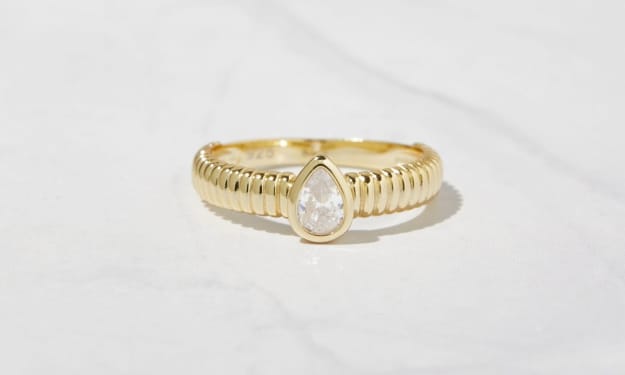Ready-Made Democracy: Book Review
The American Dream Fashion

Michael Zakim navigates the early days of the American Democratic experiment and the ways in which fashion companies like Brooks Brothers created a new concept of what citizenship could look like. He uses the production, marketing, and consumption of clothing as a lens through which to reframe and synthesize the first century of democracy and capitalism in the United States. Zakim aims to explore “how capitalist revolution came to America under the guise of traditional notions of industry, modesty, economy, and independence” (p. 2) and transformed fashion into a “paradigm of liberal governance” (p. 3).
In seven chapters, Zakim follows the development of the market for ready-made clothes from innovations in business and manufacturing through the emergence of an urban retail culture serving “white-collar” clerks to the conditions of seamstresses and, finally, to the standardization of an icon for bourgeois individualism—the broadcloth suit. Interspersing diaries, personal accounts with newspaper and periodical commentary with etiquette manuals and trade illustrations, it examines American life during the century between the Revolution and the Civil War. Michael Zakim demonstrates the ways in which clothing represents more than warmth and modesty.

Zakim traces the evolution of homespun clothing into its ostensible opposite—the woolen coats, vests, and pantaloons that were “ready-made” for sale and wear across the country. In doing so, he demonstrates how traditional notions of work and property actually helped give birth to the modern industrial order. For Zakim, the history of men’s dress in America mirrored this transformation of the nation’s social and material landscape: profit-seeking in newly expanded markets, organizing a waged labor system in the city, shopping at “single-prices,” and standardizing a business persona.

Zakim lays out a detailed and nuanced social history of a modern commodity. We learn about the adoption of inch tape measures and the refinement of drafting technologies that made standard sizes possible, as well as about the merchandising and single pricing of “marble palaces” that turned shopping into “an unmistakable industrial experience” (p. 102). There was this very interesting moment when the war of 1812 ended, America didn’t really have a fully cloth industry just yet. The raw cotton that enslaved people were being forced to grow in the South, was mostly sent to England. And so Americans bought their fabrics from the UK. But the British were the enemy in the war of 1812 and so we had stopped importing their stuff. So a surplus built up and the British dumped all this excess fabric in the ports of New York City. This might have been an intentional tactic to mess with the local economies in US Port cities. But it backfired. Because people like Henry Brooks who worked by the docks watched all this fabric pile up.

By 1850 the clothing store Brooks Brothers, had a "marble palace" of 20,000 square feet and a sales force of 2,000 (99). Pants were neatly piled on tables in the middle of its saleroom, and coats were displayed on hooks on the walls. Four hundred workers in back rooms either cut out the parts of the clothes from patterns placed on cloth or sewed together the parts into the items for sale.At a time when clothing was all made to order, off-the-rack clothes were nothing short of revolutionary. And this newfound clothing accessibility allowed Americans of all classes to look dignified and put-together. And fashion became the embodiment of democracy, and it became symbolically significant that the American presidents wore Brooks Brothers: the mass-produced, simple, modest, ready-to-wear suits of the general populace.
The fact that Brooks Brothers clothed both presidents and enslaved people- each very differently- is telling.The strength of this book lies in the author's bringing together insights from economic, industrial, labor, cultural, and gender history to support a series of broad conclusions about democracy and capitalism. This background adds a layer of meaning to 20th century evolution of ‘mainstream’ wear.
Into the 1920 and 1930s, when Brooks Brothers pivoted to making Ivy style clothes, and there was this fashion exchange between the youth of the US and UK, and you start to see an actual member of the British monarchy dress like this. The Prince of Wales loved to dress like an American. To put it in plainly, the Prince was dressing like a student from Princeton. The heir to the kingdom was wearing mass-produced, simple, modest, ready-to-wear clothes. It was a sign that the American “democratic” form of dressing reigns supreme. However, Zakim’s claim that the history of clothing is a “Northern story” is an important critique to keep in mind, and his overall silence on race in general. Overall, he achieves an in-depth multi-disciplinary discourse of market-based freedom, and emerging discussion globally around democracy, while exposing the limitations of class and gender of the new political economy, of which the men’s suit was both metaphor and embodiment.
About the Creator
Missy Banana
I always dreamed of having an anonymous blog back in the blogging hey days. Maybe I missed the fad but I still crave a space to just exist. It probably isn't that anonymouse but it's wortha shot.
Enjoyed the story? Support the Creator.
Subscribe for free to receive all their stories in your feed. You could also pledge your support or give them a one-off tip, letting them know you appreciate their work.






Comments
There are no comments for this story
Be the first to respond and start the conversation.